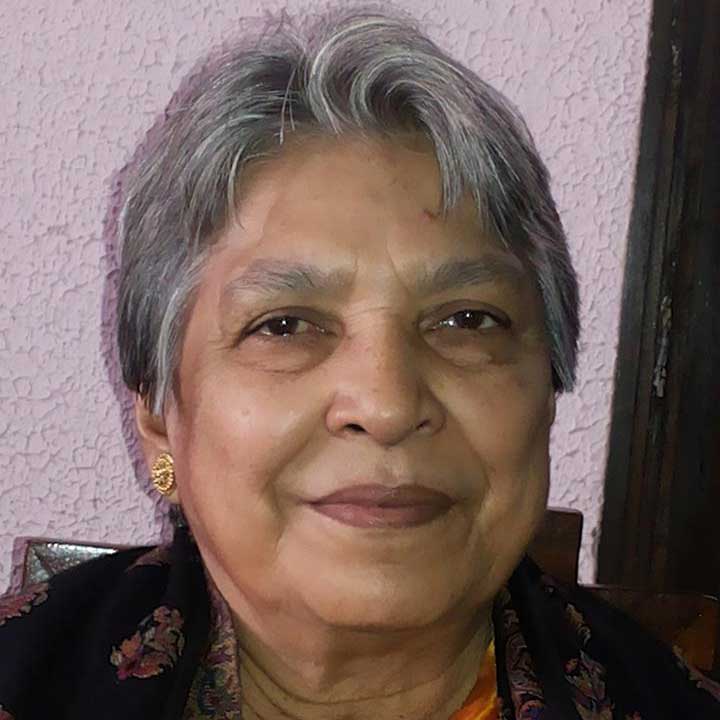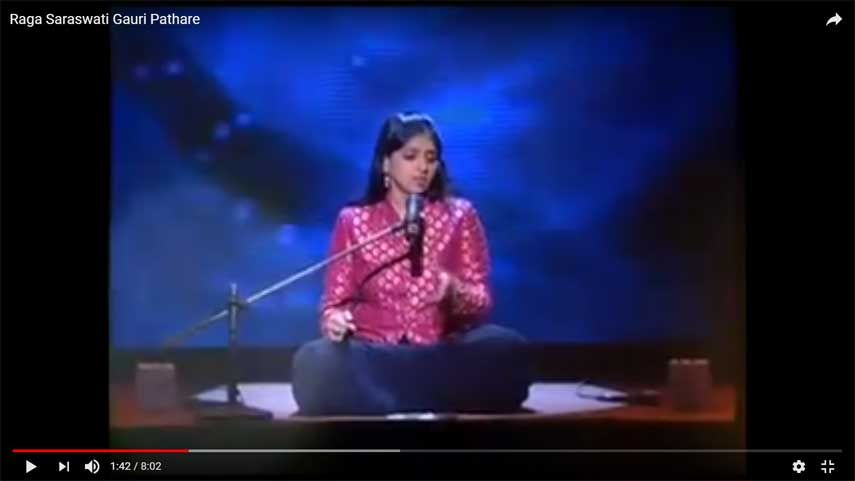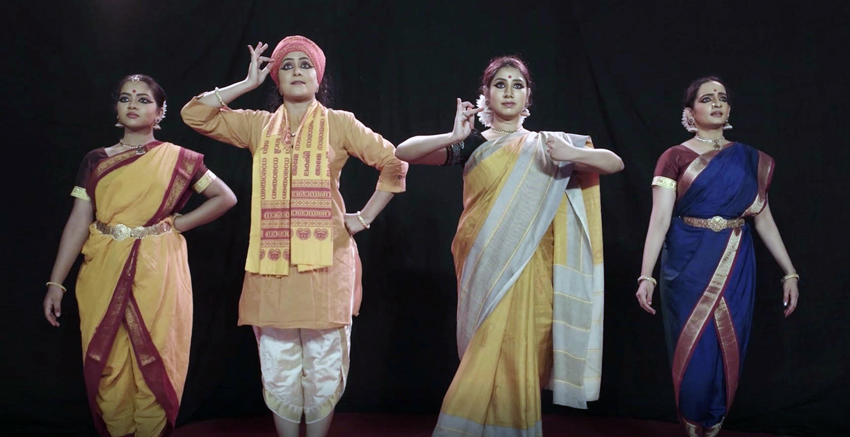Guru Kelucharan Mohapatra Award Festival has been continuing since the year 1995. Last year saw a spectacular festival as a part of their silver jubilee year. That was a milestone-not only were awards given to upcoming performing artists and veterans, it also took cognizance of critics and at least one talented photographer.
This 26th year of OMC Guru Kelucharan Mohapatra Award Festival, Srjan’s way of life in arts and aesthetics, once again exhibited their creativity and professionalism in handling a Virtual programme with master craftsmanship. The venue this time was not Rabindra Mandap in Bhubaneswar nor did the performers dance and sing in dilapidated terraces or parlours of homes or ‘under the greenwood tree’ (quote from Shakespeare). Guru Ratikant Mohapatra made sure that actual proscenium stages were the performing spaces.
Art is ever-changing with the times. Keeping this in mind the present guru of Srjan, Ratikant Mohapatra aims to preserve classicism in music and dance with a contemporary approach.
A 5-day celebration from 5th to 9th September 2020 presented the very best of performers in their respective fields.
An ardent admirer of her Odissi dance guru, Guru Kelucharan Mohapatra, actor Hema Malini inaugurated the festival.

Odissi dancer Madhusmita Mohanty trained by Gangadhar Pradhan and Aruna Mohanty has created a name for herself as a solo dancer, besides her other accomplishments. A daughter of Odisha, her obeisance to Jaganath with Aruna Mohanty’s choreographic work was a fitting start. She had a galaxy of musicians accompanying her melding rhythm and lyric to create aesthetic bliss. Description of the deity’s physical bearings replete with sancharis covering his life with the refrain ‘Jagannatha Swamy Nayana patha gami bhavatu mei’ was delightful. She struck the right chord. She sailed through Kirwani Pallavi, a pure dance to a composition of Pandit Bhubaneswar Misra and skilful movement composition of Guru Kelucharan Mohapatra. Madhusmita backed up her pure Nritya with poet Jayadeva’s Astapadi ‘Madhave Makuru Manini’. She enacted the role of a Kalhantarika heroine-the nayika had quarreled with her hero and is eager for the union. Audience involvement and participation with the nayika’s success spoke of the miming artist’s success.
The second half of the evening imported the audience to a level of ecstasy with the music of Mohan Veena created by Pandit Vishwa Mohan Bhatt, a disciple of Pandit Ravi Shankar. His faultless smooth flowing music covering note after note with ease inspired awe. He swept through tunes of Raga Yaman, Ramdasi Malhar, Tilak Kamod, Jjayjayanti, Pilu and Hamsadhswani merging them all homogenously with flawless precision.
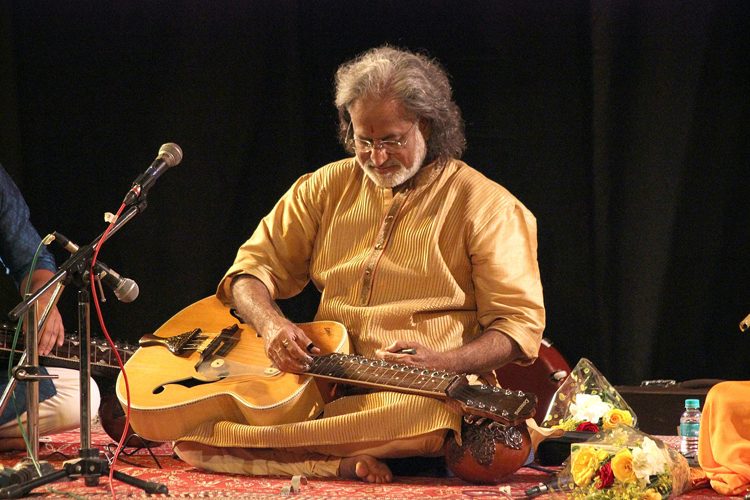
The Madras Music Academy’s best dancer of 2019, Praveen Kumar, graced the festival with his honest rendition of his guru Narmada style of Bharatnatyam.
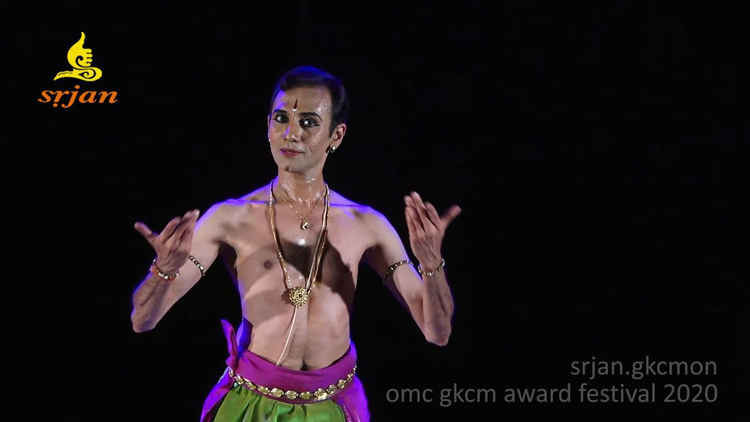
With ‘Aditya Hridayam’ as a starter, Praveen Kumar bonded instantly with his rasikas gaining strength for himself and inspiring the audience at the same time reflecting on the unchangeable nature of truth and beauty with his sense of aesthetics nurtured meticulously. Moving on to pure dance in Jatiswaram in raga Abhogi, backing him with his assiduous practice of Guru Narmada’s dance composition, he settled himself in the hearts of connoisseurs. Purandhara Dasa’s Devarnama, touching on two episodes from Krishna’s life established himself in the art of devotional aspect of abhinaya. The well-known stories of Krishna’s exploits of opening his mouth to Yasoda’s angry bidding to show the universe and unarming proud king Bali of his arrogance in the garb of a dwarf offered new dimensions.
[adrotate group=”9″]
I quite understand the possibility of dancing on the proscenium stage sans the audience during these unusual times of pandemic. But did I hear sounds of clapping by an appreciative audience?
Skilled in Kathak Gauri Diwakar trained in the Bindadin Gharana started with Dheera – a nayika obsessed with the quest and celebration of her own mystic beauty both within and without. Chabili Nar consisted of four segments covering the entire gamut of the form-the technical aspect as well as sophisticated and subtle acting ability. I especially liked, among other things, the wearing of the bindi with kumkum dust. The remnant was blown out from her middle finger. It was eloquent. That is the art of story-telling kathakas have inherited from wandering bards.

Bindadin Maharaj’s composition ‘Sab ban than ayi Shyam Pyari re’ was vocal about love in the air during spring. Gowri Diwakar transported the idea of the gopis in rasleela with their beloved Krishna. This was unique. Again Nirala’s love poem ‘Naino ke door lal gulal bhari’ was about sublime love in Vasant. It celebrated love and life. Diwakar brought alive love’s many shades through imageries. Aditi Mangaldas’ choreographic skill blossomed many folds in Gowri’s presentation.
Vocalist Shamiullah Khan and percussionist Yogesh Gangani added to her success story.
It has always been a pleasure to listen to Mardala player Dhaneswar Swain. He explored the multiple facets of Aditala and helped rasikas stumble into the talas innate beauty.

In an exclusive interview, Bismillah Khan awardee Abhisekh Raghuram spelt out to Chitra Swaminathan of The Hindu his ideas on music which, if I may say so, is universal- “Classical music is the mother of all sound. It prepares you for every musical test and adventure. As for its future, it will live on through every changing time. After all, swaras are life notes!” Coming from a culturally rich musical background, optimistic about the future of music Abhisekh Raghuram offered three compositions of Saint Thyagaraja in this programme. He chose to sing the one and the only Simhavahini piece from 27th melakartha raga Sarasangi –’Nenarunchara’ set to Adi tala- from the composition of the saint-poet. The kriti beginning with svara panchama and ending with madhyasthayi madhyama was admirable. Listening to the range of the singer’s melodious voice as he sang this beauiful raga was a rare chance . The sheer anguish of not being able to flatter people who tread a wrong path is the content of the kriti ‘Durmarga Charanam’ in Rag Ranjini.
Gopal Krishna Bharati’s composition on Nataraj rounded off Abhisekh’s recital. Listening to his rendition was delightful.
[adrotate group=”9″]
One noticeable positive point about a virtual programme is that the participating audience are art lovers, who instantly comment on their appreciation of beauty, which by itself is a review of sorts.
On September 8th, the penultimate evening, Ustad Bismillah Khan Yuva Puraskar awardee Purvadhanashree accomplished in Bharatanatyam and Vilasini Natyam accompanied by strong musical support executed great technical prowess in her presentation. She did justice to the sahitya with her abhinaya. Interestingly Purvadhanasree went to learn abhinaya from Swapnasundari, but landed up learning Vilasini Natyam. Swapnasundari has renamed the art of the Sanis, temple singer-dancers from Andhra Pradesh, Vilasini Natyam. On account of her efforts Vilasini Natyam is actively performed in temple courtyards once again. Balabhog Devdasis or Sanis used to offer Pallavi and Jatiswaram early in the morning to the temple deity, before the system went out of practice, waiting for Swapnasundari to revive the art form. Purvadhanshree started her virtual performance with ‘Churnika’ – a floral offering to the deity. The shloka spelt out in detail the names of the flowers used on each day of the week as the first offerings to the deity-‘Ravibare japa, Sombare punnaga, Mangal bare drona, Budhavare Ketaki, Guruvare champaka, Sukrabare jaati, Sanibare Vakula’, which was rather fascinating. As per tradition-Jatiswaram-a nritta piece was offered to the deity after Churnika.
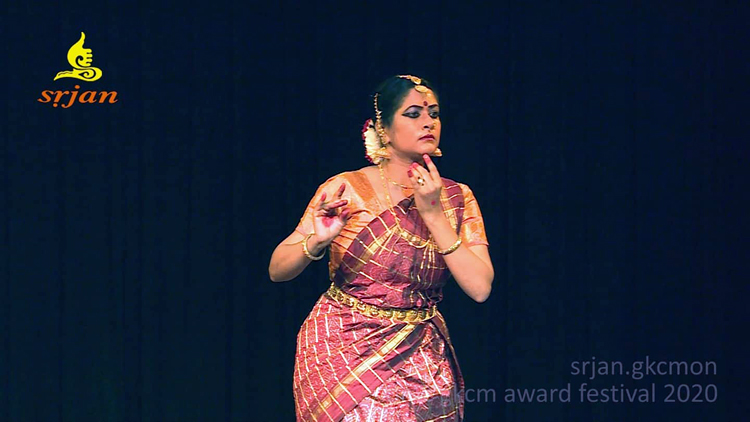
Very significantly in the piece ‘Krirathi Banamali’ the performer began with Bala Krishna playing with the mnemonic syllables, before going into the nuances of exposing the sahitya with subtle expressions, so essential to every dance form. This and the astapadi ‘Tava birahe’ from Jayadeva’s Gita Govinda followed by “Pravesha Radhe Madhava Samipe” took care of Radha’s yearnings for her beloved Krishna followed by her sakhi/gopi who as her guru urges her to enter Krishna’s abode and enjoy eternal peace, signifying her readiness to unite with the supernatural being.
Purva Dhanasree has mastered the art of Vilasini Natyam. Her abhinaya was excellent.

Pt. Tarun Bhattacharya’s Santoor recital, accompanied by the versatile Hindol Majumdar on the Tabla, was a testament to his years of experience and professional excellence. The scope of Rag Ganga -his own creation-was offered a pleasurable hearing. Tarun Bhattacharya has made his virtual presentation very realistic by including the sound of audience clapping.
After four consecutive evenings of spectacular classical presentations, the 26th OMC Guru Kelucharan Mohapatra Award Festival culminated in the award presentation ceremony and the finale by the Srjan ensemble.
This year, His Excellency Hon’ble Governor of Odisha Prof. Ganeshi Lal presented the Guru Kelucharan Mohapatra Award 2020 to Shri Raj Gopal Mishra, veteran cinematographer for his invaluable contribution and lifetime achievements to the world of Odia Cinema. For his versatility and pioneering cinematography, Raju Mishra received this coveted award and a citation. This was followed by the presentation of the Guru Kelucharan Mohapatra Yuva Pratibha Samman, which focuses on reviving the all-important role of the solo artiste in the classical idiom. Hon’ble Governor of Odisha Prof. Ganeshi Lal presented the Guru Kelucharan Mohapatra Yuva Prativa Samman 2020 to Pravat Kumar Swain for Odissi dance acknowledging his continued dedication to the art and in recognition of his inspiring performances, and to Himansu Sekhar Swain, recognising his inspiring work and commitment to the field of Odissi music. The entire award ceremony was conducted with strict adherence to all the government-mandated COVID-19 safety guidelines while maintaining the required social distancing norms.
[adrotate group=”9″]
The programme also featured two short video presentations of the 60 Guru Kelucharan Mohapatra Awardees over 25 years, and the Yuva Pratibha Samman recipients over the years. The much-awaited finale was a presentation by the Srjan ensemble, who, under the direction of Shri Ratikant Mohapatra performs extensively within India and overseas, presenting compositions with fast-paced movements, innovations in dance and music, and depicting popular themes, within the Odissi idiom. This evening Srjan presented Anweshanaa- In search of excellence, a bouquet of neo-classical choreography in Odissi dance, the presentations of which were carefully conceptualized, and choreographed by Shri Ratikant Mohapatra.
They began with an invocation to Lord Rama, Antara Rama, a devotional song by Sant Kabir exploring the transformation of Lord Rama’s devotees to divine grace. It incorporated the story of Hanuman’s devotion to Rama followed by the revelation of Rama’s form enshrined in his heart. Raga Jogia, and Adi Tala perfectly suited the piece. Sant Kabir’s the original music was composed by Pt. Nikhil Ghosh with the support music of Rupak Kumar Parida.
Their second presentation was Tarana. In this neo-classical piece, Srjan embarked on new pathways of innovation, by creating a beautiful amalgam of the classical and the contemporary with novel elements in both the music and the movements to a composition of Dr. Vyzarsu Balasubrahmanyam. The third presentation, Rase Harim Eha from the Gita Govinda of poet Jaydeva had an altogether different take. To a composition of Pandit Jasraj, Ratikant Mohapatra retold the story in dance. Amorous Krishna and the gopis makes Radha go into a reverie about herself in the company of passionate Krishna. Perhaps the poet tries to convey the message of the universal nature of the Lord, through the motif of love.
[adrotate group=”9″]
Srjan’s presentation began with Kabir’s eulogy of Rama and ended with Tulsidas’ adulation of Rama, Shri Ramachandra Krupalu Bhajamana, in Raga Malika and Adi Tala, to Pradip Kumar Das’ composition. Bhakti rasa was the reigning rasa of the piece, while the sanchari bhava depicted romantic love in Sita Swayamvar, and veer rasa through the conflict between Rama and Ravana. Srjan ensemble – Rajashri Praharaj, Ritu Sengupta, Aishwariya Singhdev, Sipra Swain, Riyanka Chakrabarty, Preetisha Mohapatra, and Reebdhita Barua-with their lissom figures were a set of well-trained dancers ready to take on the world with their life’s mission of competing with the very best. Their rigorous training and near 365-day practice routine showed in their presentation. Light designer Debiprasad Mishra was brilliant in understanding and executing the work in hand. We tend to forget that guru Ratikant Mohapatra is an accomplished mardala player till we see him at it. Vocalists Bijay Kumar Jena, Rupak Kumar Parida, Mahalakshmi Iyer, and Harapriypriya violinists Suramani Ramesh Chandra Das and Agnimitra Behera, flautist Srinibas Satapathy, sitarist Rabi Shankar Pradhan, and the vibraphone artist Bibhu Prasad Tripathy accompanied the dances with their musical ensemble.
Upholding their commitment towards diligence and professional excellence in their service of art, Srjan conducted the programme seamlessly on the online platforms. The festival was also attended virtually by several dignitaries, influential citizens, luminaries from the world of Art, and audiences from across India and abroad. The entire festival was curated and designed by Shri Ratikant Mohapatra, with the programme execution by Debiprasad Mishra.
OMC GKCMAF one of the most important festivals served its purpose in spite of the difficult times.




